A reaction of cobalt (III) chloride and ethylenediamine is a mole ratio generates two isomeric products A (violet coloured) and B (green coloured). A can show optical activity, but, B is optically inactive. What type of isomers does A and B represent ?
Geometrical isomers
Coordination isomers
Linkage isomers
Ionisation isomers
Step by step video & image solution for A reaction of cobalt (III) chloride and ethylenediamine is a 1 : 2 mole ratio generates two isomeric products A (violet coloured) and B (green coloured). A can show optical activity, but, B is optically inactive. What type of isomers does A and B represent ? by Chemistry experts to help you in doubts & scoring excellent marks in Class 12 exams.
Topper's Solved these Questions
Similar Questions
 Cl2−−→hv Products
Cl2−−→hv Products
Find out no of correct statements about above reaction.
(A) No of monochlorinated products are three
(B) No of optically active monochlorinated products are two
(C) No of optically inactive monochlorinated product is one
(D) No of dichlorinated products are ten
(E) No of optically active dichlorinated product are six
(F) No of optically inactive dichlorinated products are 4
(G) No of meso dichlorinated products are two
(H) No of dichlorinated products are six
(I) No of optically active dichlorinated products are seven
(J) No of meso dichlorinated products is oneView SolutionThe compound Co(en)2(NO2)2CI has been prepared in these isomeric forms A,B and C A does not react with AgNO3 or (en) and is optically inactive B reacts with AgNO3 but not with (en) and is optically inactive C is optically active and reacts with both AgNO3 and (en) identify each of these isomeric forms and draw their structures .
View Solution
Knowledge Check
- Question 1 - Select One
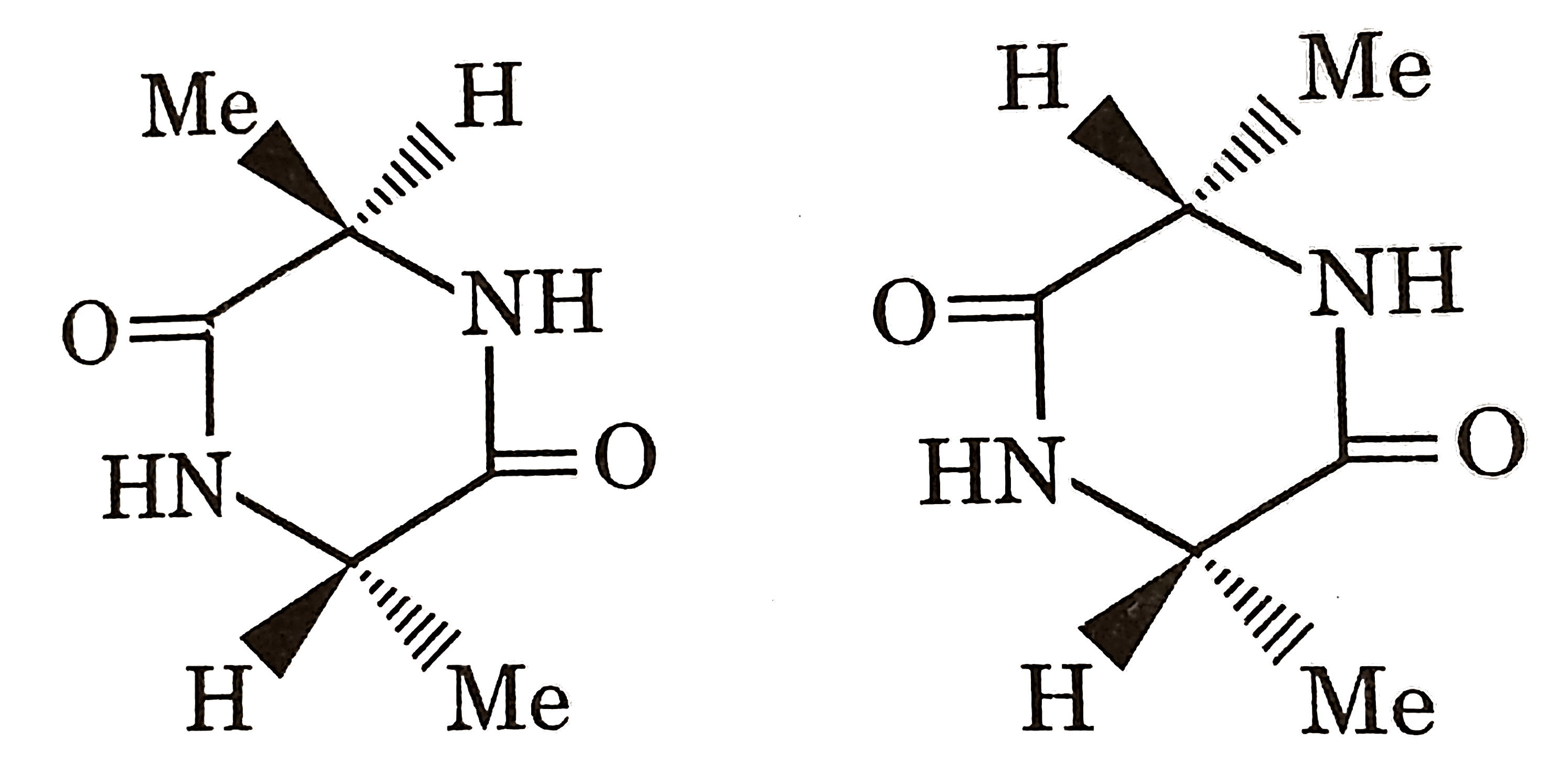
STATEMENT-1: (A) is optically active and (B) is optically inactive.
STATEMENT-2: (A) has a centre of symmetry.AStatement-1 is True, Statement-2 is True, Statement-2 is a correct explanation for Statement-1.BStatement-1 is True, Statement-2 is True, Statement-2 is NOT a correct explanation for Statement-7CStatement-1 is True, Statement-2 is False.DStatement-1 is False, Statement-2 is True. - Question 2 - Select One
When H2 is added to two isomeric alkenes A and B having molecular formula C5H9Cl, A gives optically inactive compound while B gives a chiral compound. The two isomers are
A3 - chloro -2- pentene and 1 - chloro -2- penteneB4 - chloro -1- pentene and 2 - chloro -2- penteneC3 - chloro -1- pentene and 4 - chloro -2- penteneD1 - chloro -1- pentene and 5 - chloro -1- pentene - Question 3 - Select One
When H2 is added to two isomeric alkenes A and B having molecular formula C5H9Cl, A gives optically inactive compound while B gives a chiral compound. The two isomers are
AA is 3-chloro pent-1-ene and B is 4-chloro pent- 2-eneBA is 4-chloro pent-1-ene and B is 2-chloro pent 2-eneCA is 1-chloro pent-1-ene and B is 1-chloro pent-2-eneDA is 1-chloro pent-1-ene and B is 5-chloro pent-1-ene
An organic compound (A) contaning C, H, and O (16.32%) does not decolourise bromine water and does not give any precipitate with ammonical AgNO3. It consumes 1 mol of NH2OH per mole of (A) to give a solid derivative. The monobromo derivative of (A) shows optical activity. If (A) is optically inactive, suggest the structure.
View SolutionTwo isomeric halo alkenes (A) and (B) have molecular formula C5H9Cl. (A) gives optically inactive compound whil (B) give optically active compound in hydrogenation. The two iosmers respectively are:
View SolutionTwo isomeric alkenes A and B having molecular formula, CH9H9Cl on adding H2, A gives optically inactive compound while B gives a chiral compound. The two isomers are
View SolutionA compound CO(en)2NO2Cl has been prepared in a number of isomeric form . One form undergoes no reaction with AgNO3 or (en) and is optically inactive. A third form is optically acitve and reacts with both AgNO3 and (en) complexes are
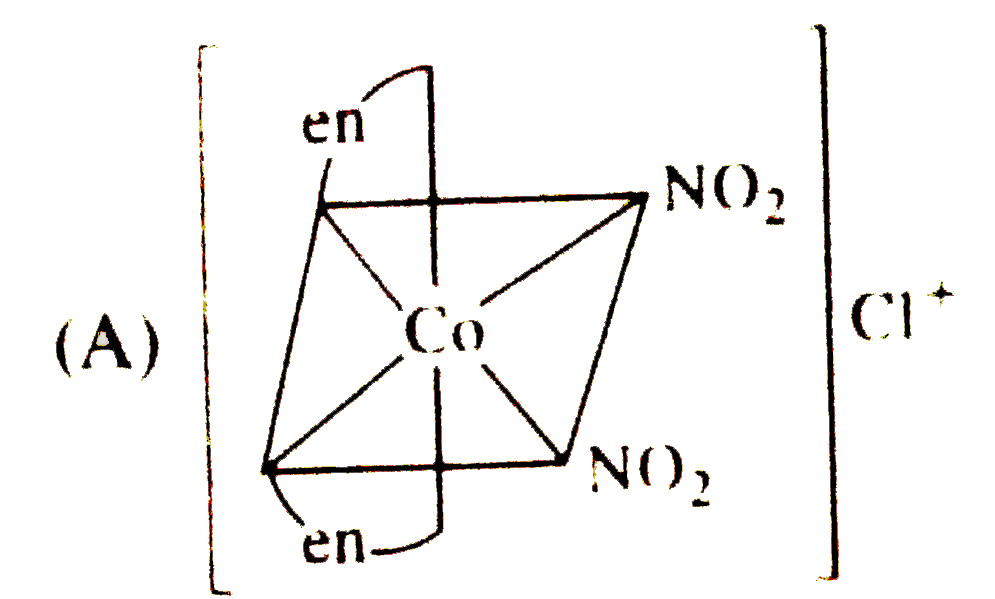
bis-bis (ethylenediamine) dinitrocobalt (III) chloride.

trans -bis (ethylyenediamine) dinitrocobalt (III) chloride.
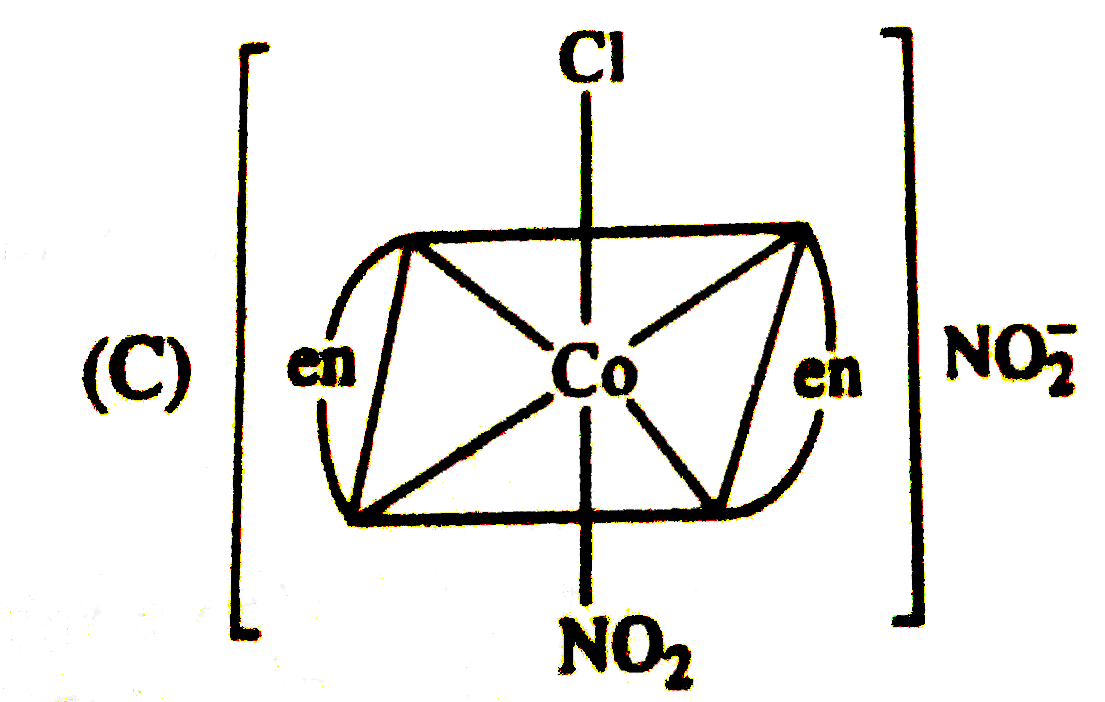
trans chloronitrobis (ethylendiamine)cobalt (III) nitrite.
One of the complexes starch iodide paper blue in acidic medium . This comples isView SolutionA compound CO(en)2NO2Cl has been prepared in a number of isomeric form . One form undergoes no reaction with AgNO3 or (en) and is optically inactive. A third form is optically acitve and reacts with both AgNO3 and (en) complexes are
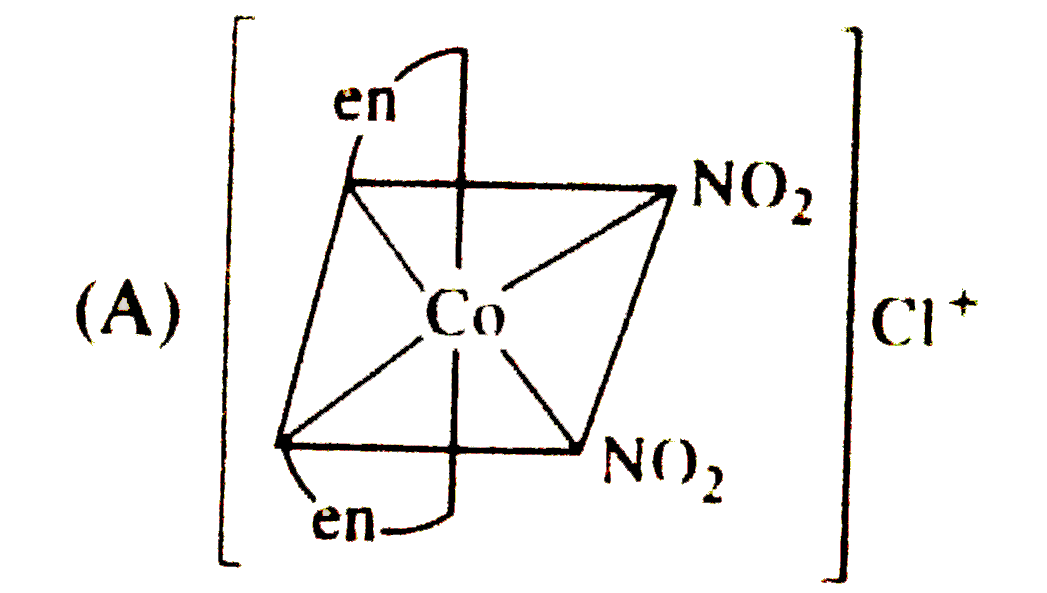
bis-bis (ethylenediamine) dinitrocobalt (III) chloride.
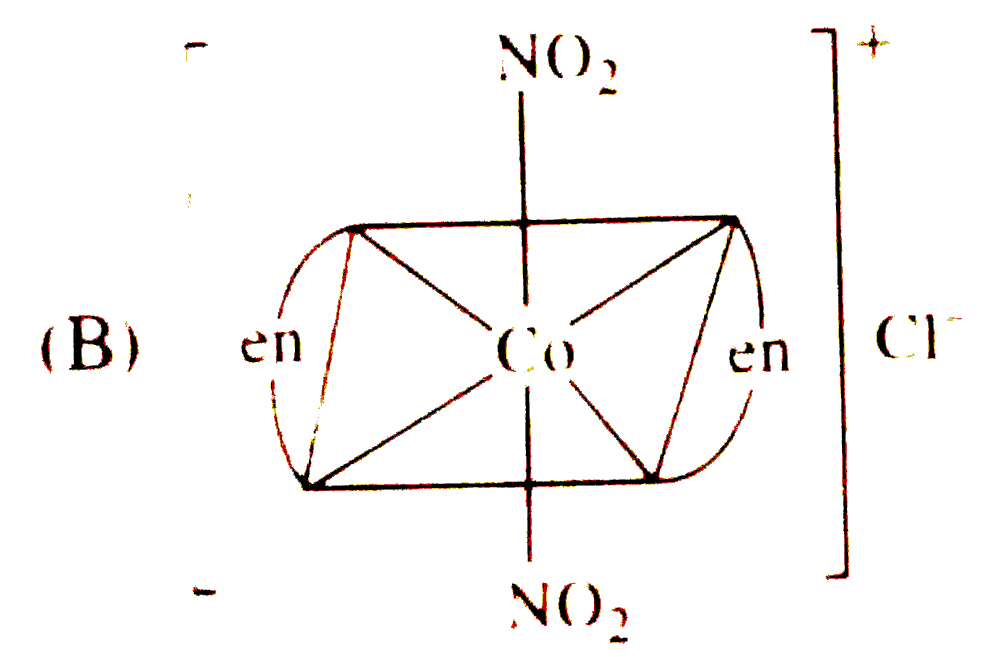
trans -bis (ethylyenediamine) dinitrocobalt (III) chloride.

trans chloronitrobis (ethylendiamine)cobalt (III) nitrite.
First form of the complex isView Solution

